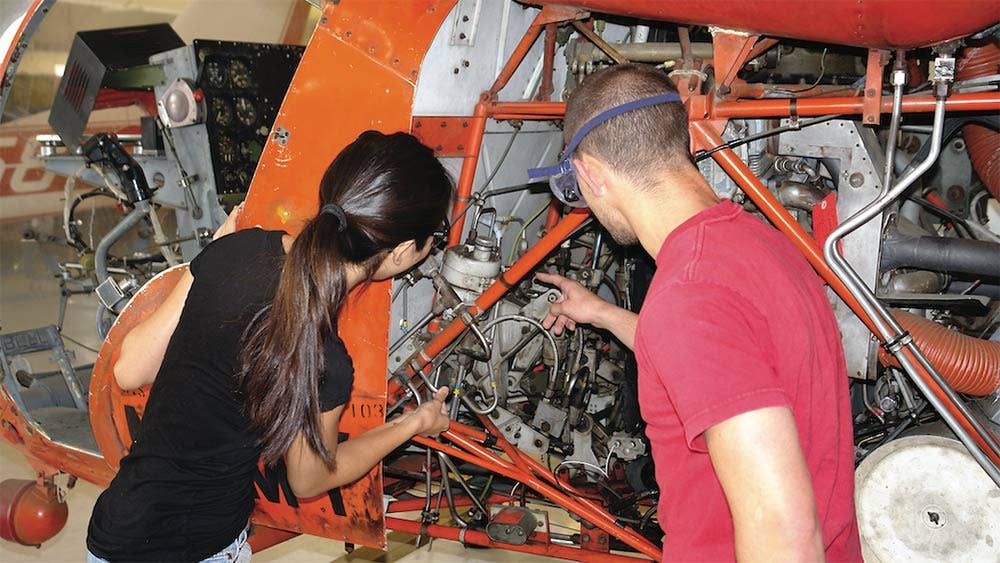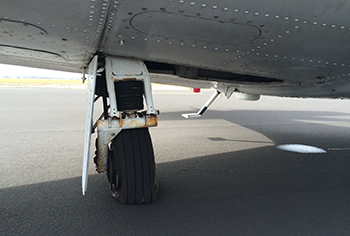An Expert Introduction to Airworthiness Directives
FAA ADs are ‘legally enforceable rules’ that every pilot should pay attention to.

There is no escaping the airworthiness directive. If you are associated with aircraft in any manner, it will affect you. [Shutterstock]
Sam pulls the white plastic lid off his cup of coffee, and the aromatic vapors hit him with full force. As is customary, he will gripe about the quality of FBO breakroom coffee but drink it anyway. It continues to baffle him how some of the younger staff stops at that Java ‘n Juice boutique joint, plunk down seven bucks for a mocha-jingo-whatever, and then leave it half consumed all around the hangar. Not him, only strong black coffee in Styrofoam cups will do. As maintenance manager, he needs the caffeine to face the daily tasks before him.
He hears the owner, Ms. Chambers, coming down the hall; her unmistakable heels clack on the ceramic tile floor. She finds him leaning against the breakroom doorframe and says, “I need to see you in my office, please.”
Great, what now? Slowly making his way upstairs, he finds his boss pacing behind her large desk and pressing her fingers to her lips in deep thought. He sits and crosses his legs.
“The FSDO called. They may want to stop by and talk to us,” she finally says. “There has been an incident.”
A Beechcraft Baron had an engine shutdown in flight after coming out of a competing repair station across the field. The magnetos seized, and the engine lost the ignition spark. Thankfully, the pilot could feather the prop and get the aircraft to an airport, landing safely. After inspecting the logbooks, it appeared that the shop returning the airplane to service missed an airworthiness directive (AD).
With concern on her face, the owner looks at her maintenance manager and says, “How can you be sure we catch all the ADs and that nothing slips through the cracks?” He can tell she’s serious. Sitting upright in the chair, Sam leans forward on his elbows and returns a confident look to his boss. “Because I make it mission critical that every applicable AD gets actioned,” he says. “Diane, I have staked my entire career on it.”
The 30,000-Foot View
Please permit me a bit of housekeeping before we get too deep into today’s lesson. This column introduces some of you to aircraft maintenance theories, practices, and techniques. It is a 30,000-foot view of a shop, hangar, and line operations. Others who have worked in the business for a long time may also benefit from these discussions by refreshing their skills, recalling similar experiences, or even learning a new trick or two. See “continuous improvement” in the policies and procedure handbook.
Many of the topics may be familiar to you, and some you could be seeing for the first time. There is usually more to the story. With each article, I provide links to enable you to take a deeper dive into the content I present here. Please take the time to click them and glance over the material. It is an excellent backup to our discussion. Again, we are here to chat about aircraft maintenance. This space is a discussion, not a one-sided conversation. If you have questions or comments, please email me at editorial@flying.media. Thank you, now, let’s return to your regularly scheduled programming.
Three Types of ADs
The FAA issues ADs whenever there is an unsafe condition with an aircraft, aircraft engine, propeller, or appliance. The three types of ADs are:
- Notice of Proposed Rulemaking (NPRM), followed by a Final Rule
- Final Rule; Request for Comments
- Emergency ADs
And yes, everything we discuss in “Maintaining Your Airplane” is grounded in the federal aviation regulations (FARs). I bet you are dying to know which one covers airworthiness directives. The section of the Code of Federal Regulations that encompasses the FARs in question is none other than Title 14 / Chapter I / Subchapter C / Part 39. Would you like to know what it says? A summary: “FAA’s airworthiness directives are legally enforceable rules.”
ADs are constantly in the news. Earlier this year, FLYING’s technical editor Meg Godlewski penned a piece concerning vintage Piper models. Just last month, editor-in-chief Julie Boatman made everyone aware that the FAA has opened the comment period on a nose-gear AD for the Tecnam P2006T. There is no escaping the airworthiness directive. If you are associated with aircraft in any manner—new or old—it will affect you.
An Art Form
Diane had good reason to be concerned. Researching, pulling, and clearing ADs is somewhat of an art form. The FAA decommissioned the Regulatory and Guidance Library (RGL) on August 16, 2022. The information transitioned to the new web space Dynamic Regulatory System (DRS), which includes access to ADs. I will reserve judgment for now, but please try it out and let me know your thoughts.
The FAA also allows you to sign up for a subscription to ADs and other airworthiness information. The European Union Aviation Safety Agency (EASA) tracks and distributes ADs as well, such as the one covering certain Continental magnetos: AD 2022-16-03.
The FAA is not the sole source when pulling ADs. A service like Tdata.com can help you stay abreast of them as well. President/CEO Jim Thomas states that his product references applicable service bulletins to streamline the action of clearing ADs. That certainly could have helped the maintenance provider across the field. Let’s check with Diane and Sam and see what they found out.
Missing a Service Bulletin?
So, what caused all the drama earlier? A neighboring maintenance provider serviced a Beechcraft Baron equipped with IO-550-C powerplants and a Continental ignition system. During the visit, they missed Continental Critical Service Bulletin CSB673C. Missing a service bulletin is not good, especially when that CSB becomes an AD.
According to Continental Aerospace CSB673C, “The supplier of Continental Part No. 10-400561, Bearing, Roller, has identified one lot of the roller bearings was delivered to Continental with a light corrosion preventive lubricant rather than the specified translucent white grease. Affected magnetos assembled without the properly lubricated roller bearing have a potential to overheat, causing accelerated wear in the contact and cam follower.” That would not be fun if a magneto overheats in flight.
The feds felt that the Continental Aero CSB addressing the magneto bearing situation was dire enough to issue an AD. On July 29, 2022, AD 2022-16-03, Project Identifier AD-2022-00614-E, went live on the Federal Register. The AD became effective on August 15, 2022. My Tdata subscription alerted me to this AD on July 28, 2022, the day before the notice went live.
I hope you’ve enjoyed this introduction to ADs. Please join me in sending a big thank you to our fictional characters, Sam and Diane, for being good sports about the FSDO calling. A visit from the FAA is nothing to be scared of if you are all squared away. Keep abreast of airworthiness directives, and manage your business—or your airplane—accordingly.

Sign-up for newsletters & special offers!
Get the latest FLYING stories & special offers delivered directly to your inbox






